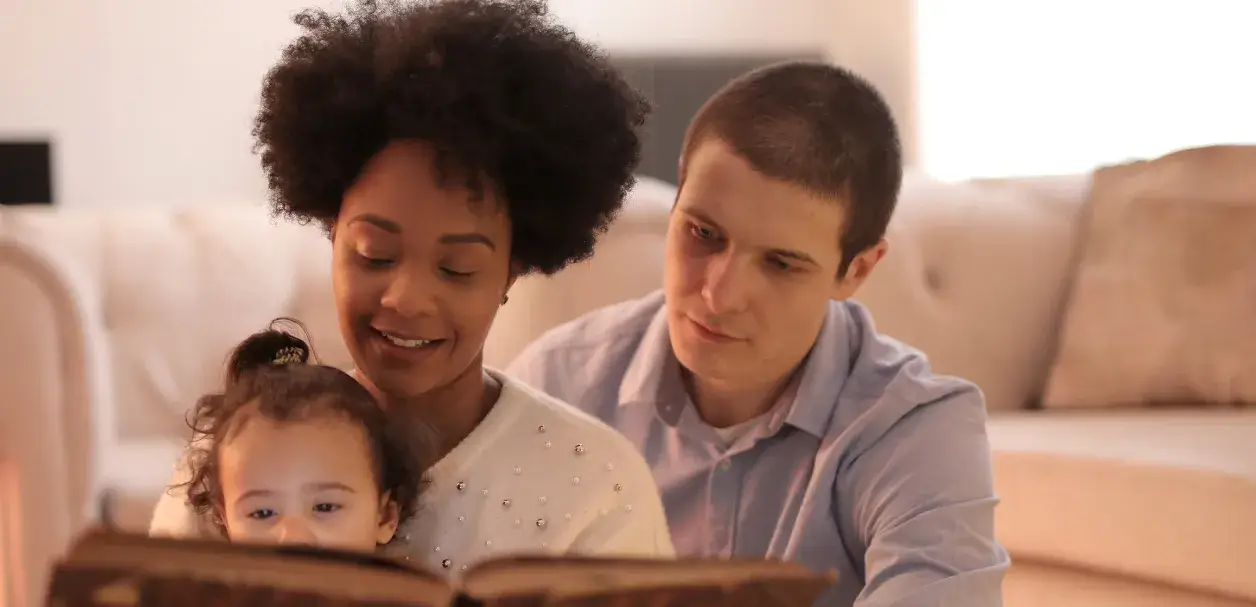While older kids may struggle with poetry, younger kids can’t seem to get enough of it. Traditionally at least, nursery rhymes and songs have been children’s first exposure to poetry—they learn them as babies, then carry them into the playground through childhood games. Look at the baby books in your local bookstore or library, and you’ll likely see rhyming texts outweigh others by many multiples. And many little ones start making up their own songs and poems almost as soon as they start speaking.
When I started reading with my baby daughter, I noticed she seemed to enjoy and pay attention to rhyming books more than others. On the flip side, she got more impatient with board books that didn’t rhyme, no matter how beautiful or colorful the illustrations. Later, when she started putting words together, she would often join in at the end of each rhyming line as we read, either with the correct word or with a sound that came close to it.
But what is it about poetry for kids and rhyming that is such music to young children’s ears? And how can rhyming picture books and poetry books help with engaging little readers and developing literacy? Let’s delve into the benefits of rhyme, plus how to incorporate poetry and rhyme into everyday life with little ones.
Kids Love Rhyme
If you want to encourage your child’s love of reading, follow their lead. Expose them to a variety of books, stories, and formats, but pay attention to what they gravitate towards—that’s what will hook them on reading. And if what they pick out happens to be rhyming stories, there’s wisdom in that.
Kids find the rhythm and predictability of rhyming poetry oh-so-satisfying. The tempo taps into the appeal of music and dance. The sing-song cadences mimic infant-directed speech, or “baby talk,” which drives language learning and connection. And there’s a gratifying build-up of anticipation towards the end of each rhyming line. Knowing or guessing what will come next builds their confidence and encourages them to join in.
Indeed, one recent survey found that children and young people who read poetry enjoyed reading more than those who didn’t—62% vs 42%. Whatever is behind that correlation, it’s a reminder about the joys of poetry.
Poems for children and rhyming picture books also tend to be short, which is great for those young attention spans. And many are funny, silly, even subversive, delighting younger children and keeping them motivated.
The bottom line? Give time to rhyme!
Rhyming Books Boost Literacy & Language
But rhyming poetry texts aren’t just fun. They also pull their weight in developing early literacy. Think of the rhyming and alliterative sounds as starter pieces in the language puzzle, attention-grabbing and easy for little brains to grasp. Over time, these developing brains figure out how the sounds fit together and make sense, paving the way for talking, reading, and writing.
Rhymes and alliteration highlight key elements of language, boosting kids’ phonological awareness—the ability to recognize units of spoken language, such as syllables and the beginning and ending sounds of words.
For example, the great majority of two-syllable English words start with a stressed syllable, and so a stressed syllable can alert babies and toddlers that a new word is starting. Listening to the kind of repeated rhythmic cues found in rhyming poetry reinforces this signaling.
Similarly, kids can hear the rhyme and alliteration of “pitter-pat” and “kitty cat.” They might even be able to break down the sounds, tap out the rhythm, and create their own rhymes to match. When it comes to learning to read and write, these phonological skills help them learn to sound out words, because they already have a trove of letter-sound relationships to draw on.
Rhyming poetry is also easy for young kids to remember—in fact, they’re better at memorizing poems than grown-ups. And this repeated exposure to words and sounds builds their phonological awareness and vocabulary.
How To Choose Rhyming Books & Poetry For Kids
Again, the number one takeaway is to encourage your child’s tastes. You may find that there are particular authors or poets that tend to be a hit with them—my daughter loved Rachel Bright, Michael Rosen, and Julia Donaldson, to name a few.
Variety is also good, though, and here you can exercise some judgment. Look out for books and authors who don’t just use rhyme for the sake of it, but those that use it to enhance their storytelling. For every beautifully written rhyming children’s book, there are countless others that may be almost unbearable to listen to or read aloud, whether due to forced rhymes, clunky meter, or because the story and rhyme feel shoe-horned together.
Ideally, rhyme should elevate the story and help it to flow, not hold it up. You can also look for lyrical books that use elements of rhyme, but aren’t written in a strict meter, and song-based picture books that kids can sing along to, like Wonky Donkey and What a Wonderful World.
Side note on language: simpler may be better. Some figurative poetic language that uses metaphors to compare one thing to another might be too complex for younger readers to follow. This can make it distracting in itself, especially if it’s on the abstract side.
Bring Rhyme Into Everyday Family Life
Of course, reading together is just one way you can enjoy rhymes and poetry with your kids. So if rhyming is your family jam, why not celebrate, practice, and integrate it outside of story time, too?
Starter ideas: favorite a few playlists to listen to in the car, make up your own rhymes and songs as you go through everyday routines, create collections of rhyming objects, watch videos and live performances of poetry and songs, and have fun with rhyming wordplay games.
Ready to dive into poetry and rhyming books with your kids? Check out our book lists for inspiration!

